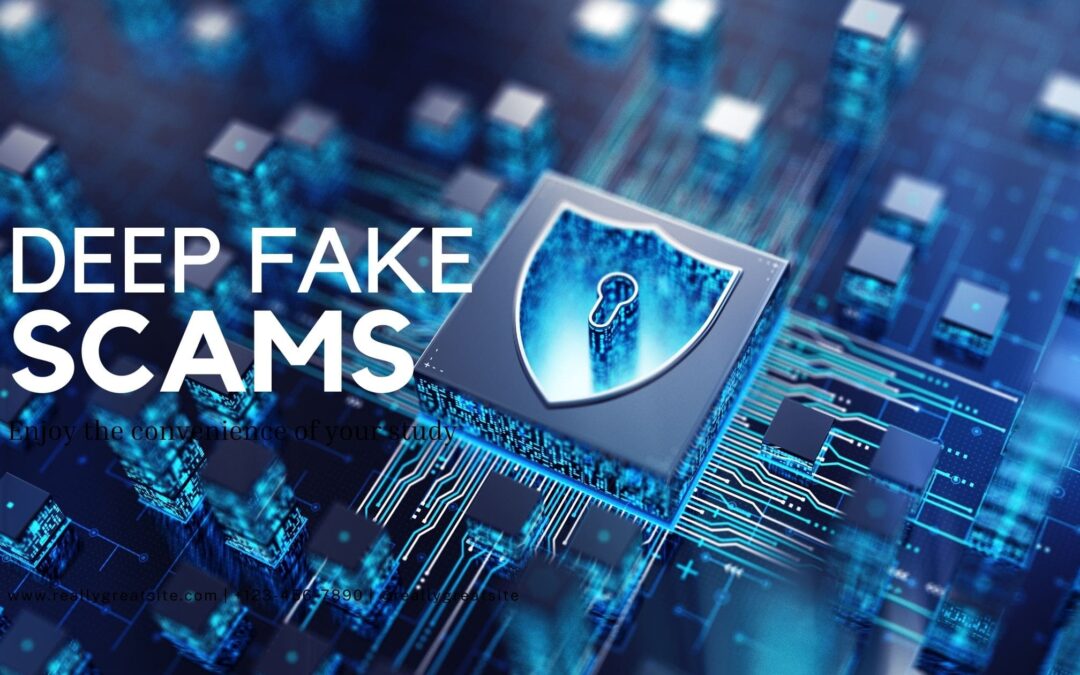The rise of artificial intelligence (AI) has brought impressive innovations, but along with it, new threats have emerged. One of these threats is the rapid proliferation of “deepfake” technology, which uses AI to create hyper-realistic but fake video and audio content. Deepfake fraud scams have become a major issue worldwide, creating confusion, damaging reputations, and defrauding individuals and organizations alike. In this post, we’ll explore how deepfake scams impact society and what can be done to mitigate their risks.
What Are Deepfakes?
Deepfakes are media (video, audio, or images) altered using AI to make someone appear to say or do things they never actually did. The technology, based on deep learning algorithms, identifies patterns in images or sounds and recreates them in such a convincing manner that it becomes nearly impossible for an untrained eye to detect the forgery. Originally developed for entertainment and art, deepfake technology has quickly evolved, now fueling fraud and scams globally.
Deepfake Fraud Scams: A Worldwide Issue
Deepfake scams have affected individuals, businesses, and governments globally. From financial scams to election manipulation, here are some of the prominent areas where deepfakes have been exploited:
- Financial Fraud
One of the most alarming cases involved a UK energy firm in 2019, where deepfake audio was used to impersonate the CEO of a parent company. The scammers, posing as the CEO, called a senior executive and convinced him to transfer $243,000 to a fraudulent account. This event highlighted how easy it is to weaponize deepfakes for financial gain. - Political Manipulation and Misinformation
Deepfakes have been used to spread disinformation and manipulate public opinion, especially in politically sensitive contexts. Falsified videos of political leaders or government officials saying outrageous or harmful statements can sway voters or destabilize social cohesion, and this form of manipulation is expected to increase. - Social Scams and Blackmail
Deepfake scams are also a significant threat on a personal level. With realistic media forgeries, scammers can fabricate compromising content of individuals and use it for blackmail. Social media influencers and high-profile figures have become frequent targets, but anyone could fall victim. - Cybercrime and Data Security Risks
Deepfakes have been used to impersonate company executives to authorize transfers, share confidential information, or approve access to secure networks. By infiltrating sensitive networks, scammers can cause extensive data breaches or even corporate espionage.
Societal Impact of Deepfake Scams
The effects of deepfake fraud extend beyond immediate financial losses. The societal impacts are far-reaching, and the widespread mistrust it fosters can have long-lasting consequences.
- Erosion of Trust
When people can no longer trust the authenticity of video and audio, it erodes trust in online content, media, and even personal relationships. This “reality crisis” means that both true and fake information are questioned, making it easier for malicious actors to spread disinformation. - Psychological Impact on Victims
Victims of deepfake scams often suffer immense stress and emotional distress, especially in cases of blackmail or reputation-damaging forgeries. The feeling of helplessness that accompanies being manipulated by this technology can have serious mental health implications. - Threat to Democracy
By making it easier to generate believable, deceptive content, deepfake technology undermines democracy and fair political discourse. Misleading videos of politicians or public figures can heavily influence public opinion, potentially shifting election outcomes or polarizing public sentiment. - Financial Losses for Businesses
Deepfake scams targeting companies have led to millions in losses globally. As businesses increasingly rely on virtual communication, deepfake fraudsters can impersonate executives or business partners with ease, tricking employees into authorizing fraudulent payments or revealing sensitive information.
How to Safeguard Against Deepfake Scams
While deepfakes present a daunting challenge, there are proactive measures we can take to protect ourselves from falling victim to these scams:
- Enhance Media Literacy
One of the most effective defenses is to educate ourselves and others about the existence and risks of deepfake technology. By understanding that not everything we see or hear online can be trusted, we can reduce susceptibility to scams. - Use Deepfake Detection Software
AI is advancing rapidly in the realm of deepfake detection. Companies and individuals can use specialized software that analyzes content for signs of manipulation. While detection software isn’t foolproof, it’s improving and can be a powerful tool against deepfake scams. - Implement Verification Protocols
Organizations should adopt strict verification protocols, especially for transactions. For example, instead of authorizing high-stakes actions based on phone or video calls, companies can require multi-factor authentication or use safe, encrypted communication channels. - Encourage Legislative Action
Many countries have started enacting laws that penalize deepfake misuse, but stronger regulatory frameworks are needed to keep up with the pace of AI advancement. Lobbying for policies that impose penalties for deepfake creation and distribution is critical for reducing these scams’ prevalence. - Stay Informed
Following updates in technology news can help us keep track of advances in both deepfake creation and detection. By staying informed, we can recognize potential risks and take steps to protect ourselves.
Conclusion
Deepfake fraud scams are more than just a technological nuisance—they represent a serious threat to global security, financial stability, and personal privacy. The best defense against deepfake scams involves a combination of technological solutions, regulatory action, and public awareness. As society continues to grapple with the ethical and practical challenges posed by AI, it’s essential to foster a culture of vigilance, encouraging both individuals and organizations to verify information before trusting it.
In a digital world where seeing is no longer believing, we all have a role to play in identifying and combating deepfake scams. By prioritizing education, implementing secure practices, and supporting detection technology, we can make our societies more resilient against this growing threat.
